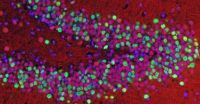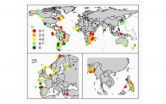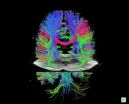(Press-News.org) Dr. Emil Kozarov and a team of researchers at the Columbia University College of Dental Medicine have identified specific bacteria that may have a key role in vascular pathogenesis, specifically atherosclerosis, or what is commonly referred to as "hardening of the arteries" – the number one cause of death in the United States.
Fully understanding the role of infections in cardiovascular diseases has been challenging because researchers have previously been unable to isolate live bacteria from atherosclerotic tissue. Using tissue specimens from the Department of Surgery and the Herbert Irving Comprehensive Cancer Center at Columbia University, Dr. Kozarov and his team, however, were able to isolate plaques from a 78-year-old male who had previously suffered a heart attack. Their findings are explained in the latest Journal of Atherosclerosis and Thrombosis.
In the paper, researchers describe processing the tissue using cell cultures and genomic analysis to look for the presence of culturable bacteria. In addition, they looked at five pairs of diseased and healthy arterial tissue. The use of cell cultures aided in the isolation of the bacillus Enterobacter hormaechei from the patient's tissue. Implicated in bloodstream infections and other life-threatening conditions, the isolated bacteria were resistant to multiple antibiotics. Surprisingly, using quantitative methods, this microbe was further identified in very high numbers in diseased but not in healthy arterial tissues.
The data suggest that a chronic infection may underlie the process of atherosclerosis, an infection that can be initiated by the systemic dissemination of bacteria though different "gates" in the vascular wall – as in the case of a septic patient, through intestinal infection. The data support Dr. Kozarov's previous studies, where his team identified periodontal bacteria in carotid artery, thus pointing to tissue-destructing periodontal infections as one possible gate to the circulation.
Bacteria can gain access to the circulation through different avenues, and then penetrate the vascular walls where they can create secondary infections that have been shown to lead to atherosclerotic plaque formation, the researchers continued. "In order to test the idea that bacteria are involved in vascular pathogenesis, we must be able not only to detect bacterial DNA, but first of all to isolate the bacterial strains from the vascular wall from the patient," Dr. Kozarov said.
One specific avenue of infection the researchers studied involved bacteria getting access to the circulatory system via internalization in white blood cells (phagocytes) designed to ingest harmful foreign particles. The model that Dr. Kozarov's team was able to demonstrate showed an intermediate step where Enterobacter hormaechei is internalized by the phagocytic cells, but a step wherein bacteria are able to avoid immediate death in phagocytes. Once in circulation, Dr. Kozarov said, bacteria using this "Trojan horse" approach can persist in the organism for extended periods of time while traveling to and colonizing distant sites. This can lead to multitude of problems for the patients and for the clinicians: failure of antibiotic treatment, vascular tissue colonization and initiation of an inflammatory process, or atherosclerosis, which ultimately can lead to heart attack or stroke.
"Our findings warrant further studies of bacterial infections as a contributing factor to cardiovascular disease, and of the concept that 'bacterial persistence' in phagocytic cells likely contributes to systemic dissemination," said Dr. Kozarov, an associate professor of oral biology at the College of Dental Medicine. Dr. Jingyue Ju, co-author and director of the Columbia Center for Genome Technology & Bio-molecular Engineering, also contributed to this research, which was supported in part by a grant from the National Heart, Lung, and Blood Institute of the National Institutes of Health and by the Columbia University Section of Oral and Diagnostic Sciences.
###
The article appeared in Volume 18 of the Journal of Atherosclerosis and Thrombosis.
The College of Dental Medicine at Columbia University Medical Center, founded in 1917, is located in northern Manhattan. In addition to providing education programs for pre- and post-doctoral candidates, CDM conducts research in state-of-the-art facilities and oversees an extensive community-based service program for residents in the surrounding community – a federally designated medical and dental manpower shortage area. Outreach into the community includes dental programs in seven area public schools, a dental van, and three off-site community-based dental clinics, providing state-of-the-art care to an underserved population as well as a rich learning environment for students at CDM. Visit us on the web: www.dental.columbia.edu
Columbia University Medical Center provides international leadership in basic, pre-clinical and clinical research, in medical and health sciences education, and in patient care. The medical center trains future leaders and includes the dedicated work of many physicians, scientists, public health professionals, dentists, and nurses at the College of Physicians and Surgeons, the Mailman School of Public Health, the College of Dental Medicine, the School of Nursing, the biomedical departments of the Graduate School of Arts and Sciences, and allied research centers and institutions. Established in 1767, Columbia's College of Physicians and Surgeons was the first institution in the country to grant the M.D. degree and is now among the most selective medical schools in the country. Columbia University Medical Center is home to the most comprehensive medical research enterprise in New York City and State and one of the largest in the United States. Columbia University Medical Center is affiliated with NewYork-Presbyterian Hospital, the nation's largest not-for-profit, non-sectarian hospital provider. For more information, please visit www.cumc.columbia.edu.
END
PHILADELPHIA – Lou Gehrig's disease, or amyotrophic lateral sclerosis (ALS), and frontotemporal lobar degeneration (FTLD) are characterized by protein clumps in brain and spinal-cord cells that include an RNA-binding protein called TDP-43. This protein is the major building block of the lesions formed by these clumps.
In a study published in the Journal of Clinical Investigation, a team led by Virginia M.-Y. Lee, PhD, director of Penn's Center for Neurodegenerative Disease Research, describes the first direct evidence of how mutated TDP-43 can cause neurons to die. Although ...
A team led by Patrick T. Mather, director of Syracuse Biomaterials Institute (SBI) and Milton and Ann Stevenson professor of biomedical and chemical engineering in Syracuse University's L.C. Smith College of Engineering and Computer Science (LCS), has succeeded in applying the concept of functionally graded materials (FGMs) to shape memory polymers (SMPs).
SMPs are a class of "smart" materials that can switch between two shapes, from a fixed (temporary) shape to a predetermined permanent shape. Shape memory polymers function as actuators, by first forming a heated article ...
The oceans became oxygen-rich as they are today about 600 million years ago, during Earth's Late Ediacaran Period. Before that, most scientists believed until recently, the ancient oceans were relatively oxygen-poor for the preceding four billion years.
Now biogeochemists at the University of California-Riverside (UCR) have found evidence that the oceans went back to being "anoxic," or oxygen-poor, around 499 million years ago, soon after the first appearance of animals on the planet.
They remained anoxic for two to four million years.
The researchers suggest that ...
CHAMPAIGN, Ill. — In one University of Illinois lab, invisibility is a matter of now you hear it, now you don't.
Led by mechanical science and engineering professor Nicholas Fang, Illinois researchers have demonstrated an acoustic cloak, a technology that renders underwater objects invisible to sonar and other ultrasound waves.
"We are not talking about science fiction. We are talking about controlling sound waves by bending and twisting them in a designer space," said Fang, who also is affiliated with the Beckman Institute for Advanced Science and Technology. "This ...
The bulk of the world's fisheries--including the kind of small-scale, often non-industrialized fisheries that millions of people depend on for food--could be sustained using community-based co-management. This is the conclusion of a study reported in this week's issue of the journal Nature.
"The majority of the world's fisheries are not--and never will be--managed by strong centralized governments with top-down rules and the means to enforce them," says Nicolas Gutiérrez, a University of Washington fisheries scientist and lead author of the Nature paper.
"Our findings ...
Boston, MA -- The deaths of 1.8 million female infants and children in India over the past 20 years are related to domestic violence against their mothers, according to a new study led by researchers at the Harvard School of Public Health (HSPH). In their examination of over 158,000 births occurring between 1985 and 2005, the researchers found that husbands' violence against wives increased the risk of death among female children, but not male children, in both the first year and the first five years of life.
"Being born a girl into a family in India in which your mother ...
ROCHESTER, Minn. -- Mayo Clinic researchers have determined the lifetime risk of developing rheumatoid arthritis and six other autoimmune rheumatic diseases for both men and women. The findings appear online in Arthritis and Rheumatism.
VIDEO ALERT: Additional audio and video resources, including excerpts from an interview with Cynthia Crowson describing the research, are available on the Mayo Clinic News Blog(http://newsblog.mayoclinic.org/2011/01/05/whats-your-risk-of-developing-rheumatoid-arthritis/)
"We estimated the lifetime risk for rheumatic disease for both ...
COLUMBUS, Ohio – Most people like to play it safe when combining colors for an article of clothing or outfit, a new study suggests.
When consumers were asked to choose colors for seven different parts of an athletic shoe, they tended to pick identical or similar colors for nearly every element.
They usually avoided contrasting or even moderately different color combinations.
A red and yellow athletic shoe? Not going to happen. Blue and grey? That's more like it.
This is one of the first studies to show how consumers would choose to combine colors in a realistic ...
An international team of physicists and neuroscientists has reported a breakthrough in magnetic resonance imaging that allows brain scans more than seven times faster than currently possible.
In a paper that appeared Dec. 20 in the journal PLoS ONE, a University of California, Berkeley, physicist and colleagues from the University of Minnesota and Oxford University in the United Kingdom describe two improvements that allow full three-dimensional brain scans in less than half a second, instead of the typical 2 to 3 seconds.
"When we made the first images, it was unbelievable ...
Cardiologists at the University of Connecticut Health Center have identified a protein fragment that when detected in the blood can be a predictor of heart attack.
Their research, led by Dr. Bruce Liang, director of the Pat and Jim Calhoun Cardiology Center, is published in the Jan. 11 issue of the Journal of the American College of Cardiology. It found heart attack patients had elevated levels of the protein fragment known as Caspase-3 p17 in their blood.
"We've discovered a new biomarker for heart attack, and showed that apoptosis, or a particular kind of cell death, ...





